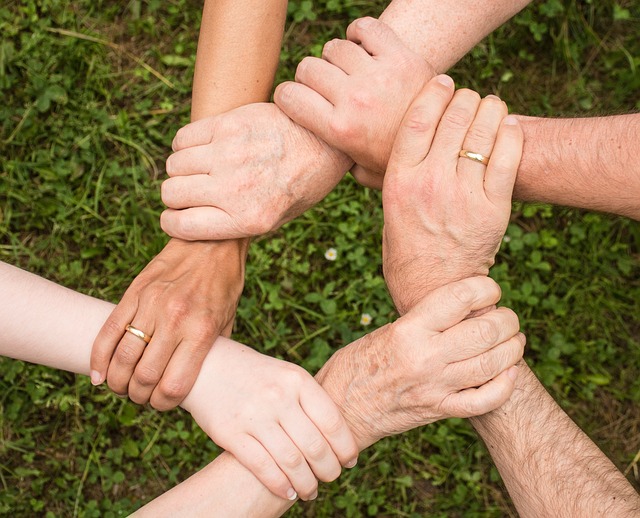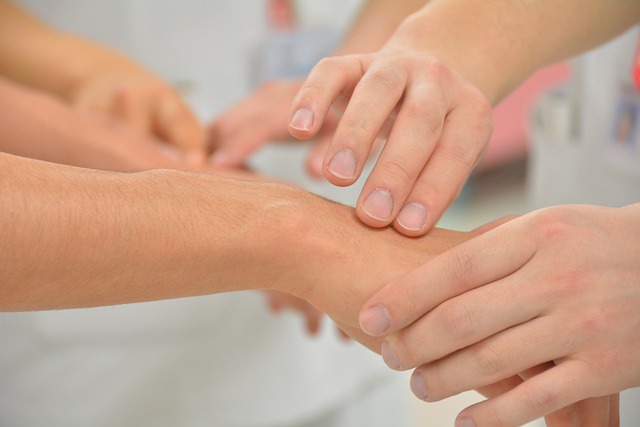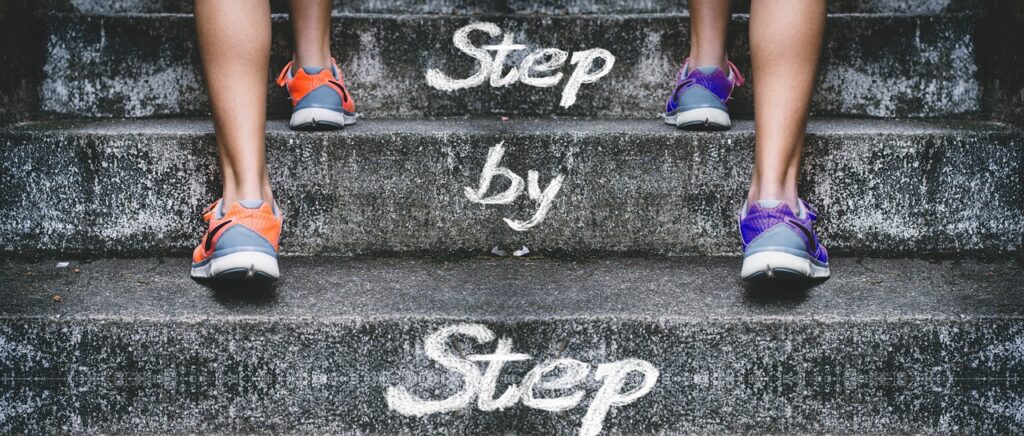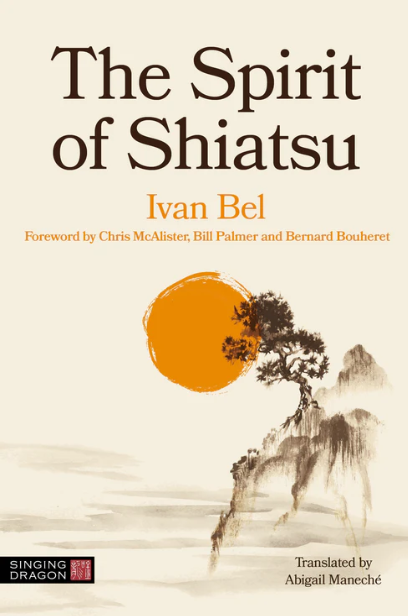Third and final part of Bernard Bouheret’s extensive and fascinating reflection on the Meiken effect, also known as the Rebound effect or Post-treatment effect. This time we look at the practical details that will guide practitioners and prevent them from confusing simple pain with the Meiken effect. In this article, we find out whether this rebound effect is actually occurring, what symptoms are most often encountered in the context of this effect, how to recognize it with the help of pulses, what the most common reactions are and, finally, how to react when in doubt about a Meiken effect. A truly fascinating read.
How do we know it’s the Meiken effect that’s really at work?
That’s a legitimate question to ask yourself. The answers can be divided into five categories: knowledge, significance, patience, relief, and trust.
- Ask the receiver if the effects felt are already known. – Knowledge
- Are these effects even stronger than before the session? – Significance
- How long do these effects last? – Patience
- Has there been any improvement after a few days? – Relief
- Does the recipient trust you? You can’t work with someone who doubts. – Trust

A non-exhaustive list of symptoms of the Meiken effect:
All are the result of experience gained in the practice and which you may encounter in your own work.
- Fatigue
- Sudden drowsiness
- Insomnia
- Hypersomnia
- Headaches
- Nausea
- Vomiting
- Fever
- Cough and spits
- Frequent sneezing
- Diarrhea
- Constipation
- Eczema (following Asthma)
- Hives
- Restlessness (frequent in children)
- Depression
- Stones (ie kidney) evacuation
- Bronchitis
- Nightmares
- Colitis
- Menstrual cycle disorders (menstruation is often in advance)
- Various pains and recalls of old ones.
- Increased dream activity (sometimes contact with the deceased)
- Melancholy
- Sweating
- Herpes
- Hypotension (para-sympathetic)
- Heart arrhythmia
- Dark thoughts (“teenage”)
- Tear attacks (decompensation)
- Frequent urination (detox)
- Muscle spasms
- Torticollis (following lumbago)
- Vertigo
- Tinnitus
You could say that there’s this Spatio-temporal Meiken effect that defies linear time and can be correlated with what Buddhists call the 4th time. It’s the same for quantum physicists, who have changed the game with their theory. Matter has both a corpuscular and a wave aspect.
There is also an organic Meiken effect, which is the organs’ response to the treatment impulse. It’s an in-depth response, and the organs benefit from the treatment to recover energy and regain their balance.
Then there’s a psychological Meiken effect, the response of the visceral entities to the Shiatsu given. The treatment puts the finger where it hurts, where sometimes the patient has done everything possible to hide the problem. We open the cupboards! Qi has its own way of going to the key place!
The boundary between these three Meiken effects is subtle and can be somewhat porous.

Beyond these 3 Meiken effects, there’s an immediate Meiken effect, when the patient immediately reacts to the Shiatsu stimulus: you’ve all experienced this. The result is tears, laughter, spasms, cries, yawns, rumblings, sleep, ecstasy, the sensation of levitating, lightness, heaviness, relief from an inner weight, the feeling of being washed inside, various flavors, various smells…
Shiatsu is like listening to music: it triggers multiple interactions!
Recognizing the Meiken effect through pulse taking
How to recognize a possible Meiken effect by taking the pulse? For the experienced practitioner, it is possible to suspect a rebound effect by palpating the pulses at the end of a session.
Here are a few examples:
- All pulses collapse: Significant fatigue will follow.
- All pulses tense up: internal work will take place (Liver-GB)
- A sizzling sensation appears: outflow of Perverse Qi (Xié Qi): you can feel hot, cold…it’s perfect, it’s coming out!
- An organ pulse is abnormally strong or weak: this highlights the role of this organ in the disease or disorder.
- All pulses collapse except the Kidney. The individual relies upon willpower
- All pulses collapse except the Lung; he holds to the instinct of self-preservation.
- All pulses collapse except TW-PC: he holds on to his nerves.
- Pulse becomes erratic: not a good sign, especially in the case of chronic disease.
- Pulses accelerate: not a good sign (unless it was already too slow)
- Yang pulses weaken but Yin pulses rise: good sign, back to the root
- Yin pulses weaken and Yangs increase: bad sign, loss of root
- “feeling of plate” moving between right and left: it’s going to be bumpy!

It’s important to understand at this stage that the pulse can already indicate the change that’s about to take place in order to restore the balance. It’s as if it were an indication of things to come. The pulse is the body’s foresight. We’re already in another space-time.
Don’t think you’ve done a bad job but perceive the work the body is doing to restore health. Otherwise, you’ll miss the point, and that’s a pity. Thinking you’ve done something wrong is also giving yourself too much credit. Just as we shouldn’t attribute positive results to ourselves, we need to observe and understand the process that takes place when a result is apparently negative. This is exactly what we’re talking about with Meiken effect. Shiatsu has its own laws and takes its own path, and this is not mental.
Let Shiatsu do its work, as it carries within it the possibility of repairing, harmonizing, and restoring health. We are workers, and Life is our Master. It’s fundamental not to take credit for what we do.
Most common reactions
Let’s take a closer look at the reactions you’re most likely to encounter. The most frequent symptom following a treatment is undoubtedly fatigue. Very often, the treatment produces an immediate feeling of well-being and relaxation. The same evening, a deep sense of relaxation sets in.
But the next day can be terrible, and the Meiken effect devastating.
The more Yang a person is, the stronger Meiken can be!
People of a more Yin nature may trigger Meiken after several sessions, and this is unexpected. Yang people react immediately and strongly. Children react within minutes (sleepiness, restlessness just after the session – or during – and it’s best to warn parents beforehand…).
To soothe Meiken effect, ask them not to eat too much after Shiatsu, to drink plenty of fluids, not to get tired, to go to bed early, and above all not to drink alcohol, as this would totally distort the body’s spontaneous healing reactions.
It often lasts one or two days, after which the body recovers its natural state of balance and a clear feeling of well-being sets in.
Sometimes it’s the opposite: the Meiken effect is immediate and there’s no visible improvement at all – quite the contrary. Everything gets worse, and you have to cross the river. In this case, temporize and ask your patient to remain calm, not to rush to the doctor who won’t understand anything and might panic (and the patient too!).
Stay in touch with the patient, and ask him or her to call us if he or she is concerned. The ability to build a relationship of mutual trust is very important to the success of a treatment.
A former patient who had low self-esteem reminded me of something I said to her at the start of treatment, which really touched her. “Let me have confidence in you”.
Healing is in any case a hand-to-hand affair!

The Meiken effect can eliminate a pathological source by bringing it to light (such as an anal fistula). It forces the body’s defenses to mobilize in order to restore health. This explains the strength of certain reactions. Shiatsu, through its work on the pathways of the meridians and on the key points, helps Life to penetrate all the spaces and spheres of our selves.
The Meiken effect is a mighty manifestation of Life!
It’s important to distinguish between ” inbound ” reactions (i.e. a series of drugs with deleterious side-effects) and ” outbound ” reactions (which come from Meiken and are actually beneficial). Sometimes, even a pathology such as cancer can be an outgoing disease! This is where the surgeon’s scalpel comes into its own. It’s time to cut away and expel the phlegm. Precise questioning, observation, listening and palpation all play their part in discerning the situation. The traditional 4 steps of oriental diagnosis will be very useful in sorting things out.
When in doubt about a possible Meiken effect
Here are a few recommendations and precautions to take if you have any doubts. After a session that triggers Meiken effects:
- Precaution: one dose of ARNICA 5CH
- Lavender Essential Oil on wrists (6PC) and chest (17CV)
- If no improvement after 5 days, reapply a soothing treatment (Earth-type Shiatsu) not too long, maximum 30 min.
- One could also punctuate the following 5 points like a 5-pointed star; the two HT7, the two Kd1, the VC6 (or the VC4), the VG20 in case of great excitement and the VC17 in the center of the chest. This is a balancing strategy. The idea is to stimulate the center by the location of the points.
If there is still no improvement after a 2nd Shiatsu, you should recommend some medical check-ups, blood tests… (which is out of our control). Don’t believe you’re almighty, but work in conjunction with your doctor.
Sometimes Shiatsu triggers painful reactions that are not Meiken effects. For example, following a herniated disc, the treatment may worsen the pain, and we know that an operation is now inevitable, but this will be done wisely (which is not always the case, far from it!).
Taking the pulse, too, will guide the practitioner along the way. If the pulse improves, then you should remain confident, even if the symptoms persist. The pulse never lies, and confidence in this subtle diagnosis is earned over the years!
Examination of the pulse is key to framing and understanding the Meiken effect. No need to be an expert, just know the basics: strong-weak, fast-slow, hard-soft; Yin-Yang in excess or in emptiness.
Understanding the place of the Meiken effect in our practice is essential to the success of our discipline and the support we provide to our patients.
Case in point: this day, July 27, 2022: On July 17, Adélaïde came to see me for endometriosis, feeling sad and depressed. Following the 1st session, she had very clear nightmares that brought back memories of abuse she had suffered while on medication (sleeping pills, Xanax…). They lasted several days, then stopped after 5 days. Clearly, the Hun had been affected! Then, the day after the nightmares stopped, she took a decision on a whim (as she says), or a Hun decision (as I say), to fly to the USA to see her best friend. Here’s a nice Meiken effect of liberation. The nightmares were “outgoing symptoms”.
We could also speak of a Meiken effect for the practitioner, as it’s true that sometimes the patient’s Qi can influence our own. Know that you need to wash your hands well with cold water after each session. Carry peppermint EO with you, just in case. And always have something to eat, as you can get quite hungry after a session.
There’s so much more to say about Shiatsu…

Conclusion
Following the principle of the Oneness of All Things already expressed, always be in touch with your own perceptions and question your patient for validation.
Realize that during treatment, it’s no longer our ” own little body ” that’s in contact with our recipient, but the ” bigger body “, known alternately as the Breath body, the feather body (Qi Gong), the subtle body, the rainbow body… it’s this Breath field that gathers precious information during treatment and exchange. It’s through this “large open body” that the non-duality which is impossible in the “small closed body” is experienced.
Qi nourishes, Qi protects, Qi informs, Qi connects!
To be good Shiatsu disciples, let’s be good disciples of Life.
“I must confess that there is nothing to teach, no religion, no science, no corpus of information that would lead your mind back to the Tao.
Today I speak in this way, tomorrow in another, but always, the Complete Way remains above words, beyond the reach of understanding.
Simply remain aware of the Unity of things.”
Hua Hu Jing [i]
Notes
[i] The Huahujing (formerly Hua Hu Ching) is a Taoist work, traditionally attributed to Laozi (formerly Lao Tzu). Two unrelated versions are said to exist, a partial manuscript discovered in the Mogao caves in Dunhuang, China, and a modern English version derived from oral tradition, while some scholars believe the work as a whole is later, dating from the 4th century CE.
The work is honorably known as Taishang lingbao Laozi huahu miaojing (太上靈寶老子化胡妙經, “The Sublime Classic of the Supreme Numinous Treasure on Laozi’s Conversion of Barbarians”).
Author
- The Meiken effect in Shiatsu – part. 3 - 15 May 2023
- The Meiken effect in Shiatsu – part. 2 - 30 January 2023
- The Meiken effect in Shiatsu – part. 1 - 25 November 2022











